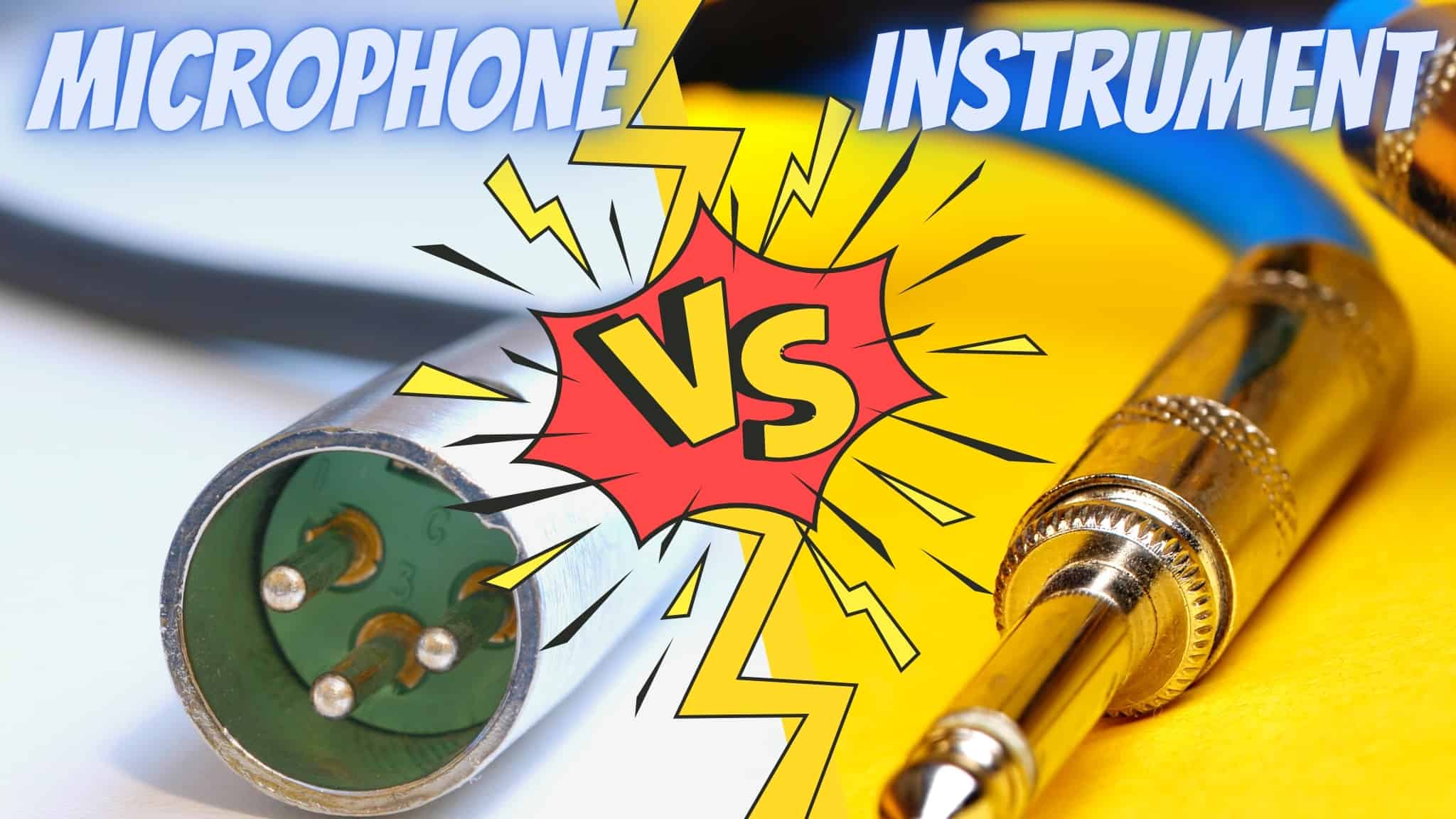Microphone and instrument cables are two common analog cables used by audio experts and enthusiasts.
They are used to transfer audio signals.

As suggested by their names, microphone cables transfer mic level signals and instrument cables transmit instrument-level signals. The difference between them is therefore the level of signal, as well as the fact that mic cables transmit balanced signals, whereas instrument cables give out unbalanced signals that are more prone to noise interference.
Read on as we take a more in-depth look at these differences, how each cable functions, and the top brands on the market for each.
Microphone Cable vs Instrument Cable: Definition
As analog wires, both microphone and instrument cables use a stream of electricity to transmit signals.
They are different from digital cables as digital cables work by transmitting information through a long string of 1’s and 0’s (binary code).
What is a microphone cable?
A microphone cable, also known as an XLR cable, is made up of three main components. These include:
- Internal wire conductors, which carry the audio signal.
- Shielding, which protects the information passing through the conductors.
- Three-pronged connectors, that allow the cable to be connected at either end.
All three components need to remain functional in order for the cable to work.
What is an instrument cable?
Instrument cables, typically from an electric guitar or bass, consist of one or two wires covered in shielding.
The shielding prevents electrical noise from interfering with the transmitted signal and can come in the form of a metal or foil braiding around the wire/s.
Instrument cables can be confused with speaker cables. However, speaker cables are bigger and have two independent wires.
Microphone Cable vs Instrument Cable: Differences
Several aspects set microphone cables apart from instrument cables.
Mic Level vs Instrument Level
The main difference between microphone cables and instrument cables are the level or strength of audio signals they transmit.
The standard signal strength used with all professional audio equipment is referred to as line level (+4dBu). dBU is a common decibel unit used for measuring voltage.
Mic level signals, which come from mics and are sent through mic cables are weaker, at roughly -60 dBu to -40dBu.
Instrument level signals fall between the mic and line levels and refer to any level put out by an instrument.
Both mics and instruments need to have their signals boosted to line level using some sort of preamplifier in order to be compatible with other equipment. This is known as gain.
Balanced vs Unbalanced
In the recording studio, there are two types of cables: balanced and unbalanced.
Balanced cables are immune to noise interference from radio frequencies and other electronic equipment.
They have three wires, whereas unbalanced cables have two. The third wire in balanced cables is what creates its noise-canceling quality.
Microphone cables are balanced, producing balanced mic level signals.
However, instrument cables are unbalanced, producing unbalanced instrument level signals.
Also read: Best Mixing Consoles For a Recording Studio reviewed.
Microphone Cable vs Instrument Cable: Uses
Microphone cables have several uses, and their audio application ranges from live shows to professional recording sessions.
Instrument cables are low power and operate in a high impedance environment.
They are built to convey a weak, unbalanced signal from a guitar to an amp, where it gets boosted to line level.
That being said, they are still commonly used on stages and in the studio.
Microphone Cable vs Instrument Cable: Best Brands
Now that we’ve looked at the differences between these two cables, here are our brand recommendations.
Microphone Cables: Best Brands
Let’s start with microphone cables.
- AmazonBasics XLR Microphone Cable is anything but basic – a popular online option that is highly affordable and available in a range of lengths.
- Mogami Gold STUDIO-06 XLR Microphone Cable may be pricier but has an enhanced dynamic range that promises pin-drop quiet recording.
- Neewer 6-Pack Audio Mic Cable Cords offers cool cable colors, great performance, and increased durability.
- Cable Matters 2-Pack Premium Microphone Cable is a pro-grade cord designed for professional recording and is also cost-effective.
Instrument Cables: Best Brands
And now for our instrument cable top picks.
- New bee Electric Instrument Cable promises high quality, superior flexibility, and a lifetime warranty.
- RIYO Electric Instrument Cable is a guitar cable offering low noise and great signal stabilization qualities.
- Pig Hog PCH20BKR Black Woven Instrument Cable is a tour-grade cable with woven outer coverings, built especially for the road.
- AmazonBasics Tweed Cloth Instrument Cable comes with a braided black-grey cover and is ideal for connecting electric guitar, bass or keyboard to an amplifier.
So there you are, microphone cables are definitely not the same as instrument cables.
Read on: Condenser Microphone vs USB [Differences Explained + Top Brands].
I'm Joost Nusselder, the founder of Neaera and a content marketer, dad, and love trying out new equipment with guitar at the heart of my passion, and together with my team, I've been creating in-depth blog articles since 2020 to help loyal readers with recording and guitar tips.

